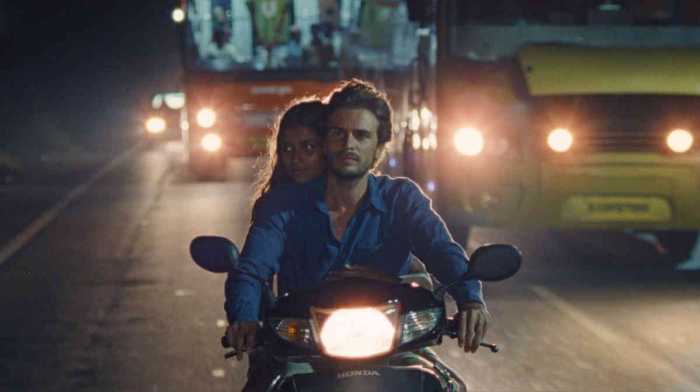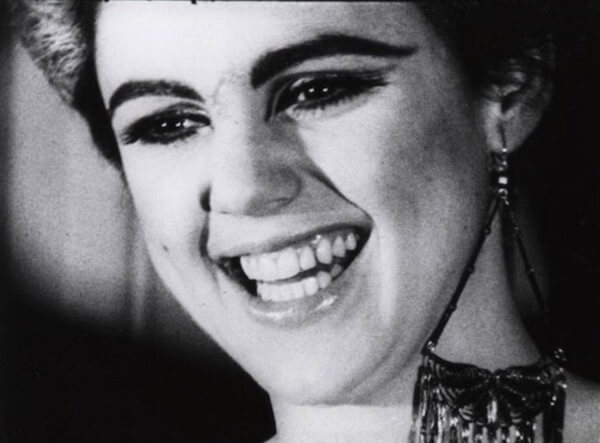Sherwan Haji in Aki Kaurismäki’s “The Other Side of Hope,” which opens December 1 at Film Forum and the Walter Reade Theater at Lincoln Center. | JANUS FILMS
It’s often proclaimed today that every minority group should be the first in line to make films about themselves — and straight, white, Christian, cisgender men should be the last to make films about people other than themselves. There’s some justification for this perspective that goes beyond simply the historical entitlement of the overdogs to make the vast majority of Western art and the marginalization of everyone else.
Kathryn Bigelow’s “Detroit” received reviews arguing that a white person shouldn’t have made it, and watching its central hour of African Americans being tortured and murdered by white cops without shedding any light on racism or police brutality that couldn’t have been made in a mere five minutes of similar material goes a long way toward making that point of view totally comprehensible.
But black British director Steve McQueen’s “Shame” and the worst parts of “Twelve Years A Slave” prove he is equally capable of making such an exploitative and tasteless film. If white men were barred from depicting Arabs the racist TV show “Homeland” might be off the air, but a film as compassionate and warm as Finnish director Aki Kaurismäki’s “The Other Side of Hope” could never have been produced.
Aki Kaurismäki witty and warm in his tale of an undocumented Syrian’s struggle
“The Other Side of Hope” begins with Khaled (Sherwan Haji), who has arrived in Finland from Aleppo, Syria, to seek asylum after being attacked in Poland by Nazi skinheads. The Finnish government does not allow him to stay in the country but he ducks out on officials and decides to remain as an undocumented immigrant. Living on the streets, he faces racism again, as well as kindness from white Finns. Wikström (Sakari Kuosmanen), a traveling salesman in his 50s who wants to open a restaurant, finds a homeless and sleeping Khaled and offers him a job as a cleaner and dishwasher. When the restaurant finally opens, they become unlikely partners in navigating a new Finland.
Much of what’s appealing about “The Other Side of Hope” is the way Kaurismäki deals with Important Subject Matter without changing his style or sensibility one iota. His films have always felt like a mix of Frank Capra and Jim Jarmusch, combining a commitment to surface cool and hipness with a heart, even a sentimentality that’s all the more powerful because it’s somewhat buried. Until very recently, Kaurismäki has never made films that feel overtly political, but he has consistently expressed as much sympathy for working-class people as Ken Loach or the Dardenne brothers. He seems to share the same international arthouse influences that fed Jarmusch’s “Stranger Than Paradise,” and one can see echoes of Robert Bresson and Yasujiro Ozu in his framing and cutting choices. But there is also a deadpan wit that’s not far from Buster Keaton.
Kaurismäki directs all of his actors to show as little emotion as possible, even when they’re obviously going through difficult or intense circumstances. One way he shows respect for his Middle Eastern characters is letting them play out their lives in the same superficially blank style as the white Finns.
There’s something dated about Kaurismäki’s idea of cool; after all, he’s now 60. “The Other Side of Hope” was shot and edited on 35mm, and although it played the New York Film Festival in October on DCP, it will play both New York venues on film. He has loudly declared his contempt for television and Hollywood, although he admitted in a recent article in the Guardian that he can watch superhero movies if he’s hung over. There’s lots of music in “The Other Side of Hope,” but all of it is blues, folk, early rock’n’roll, or traditional Middle Eastern songs (played by Khaled on a dulcimer). Kaurismäki realizes that the arrival of people of color in his country is not an invasion and states so vehemently in this film.
“The Other Side of Hope” tackles major problems and themes of our time with a wicked sense of humor. Rather than editorializing angrily about appropriation, Kaurismäki depicts white people running a sushi restaurant that serves portions of wasabi three times the size of the slice of fish underneath. To anyone who knows how fiery wasabi can be, this would obviously be inedible, but the chef apparently doesn’t realize this and the image is quite funny.
The film allows Khaled to make a bitter remark about “unbelievers,” trusting the audience will remain sympathetic to a Muslim man’s anger after getting attacked by white European Christians several times. In real life, 60,000 Poles recently marched, calling for an “Islamic Holocaust.” “The Other Side of Hope” simply looks in Khaled’s soulful eyes, lets him speak for himself, and wonders why the hell white Europeans are so freaked out by sharing their continent with Muslims.
THE OTHER SIDE OF HOPE | Directed by Aki Kaurismäki | Janus Films | In English and Finnish and Arabic with English subtitles | Opens Dec. 1 | Film Forum, 209 W. Houston St.; filmforum.org | Film Society of Lincoln Center, Walter Reade Theater; filmlinc.org





































